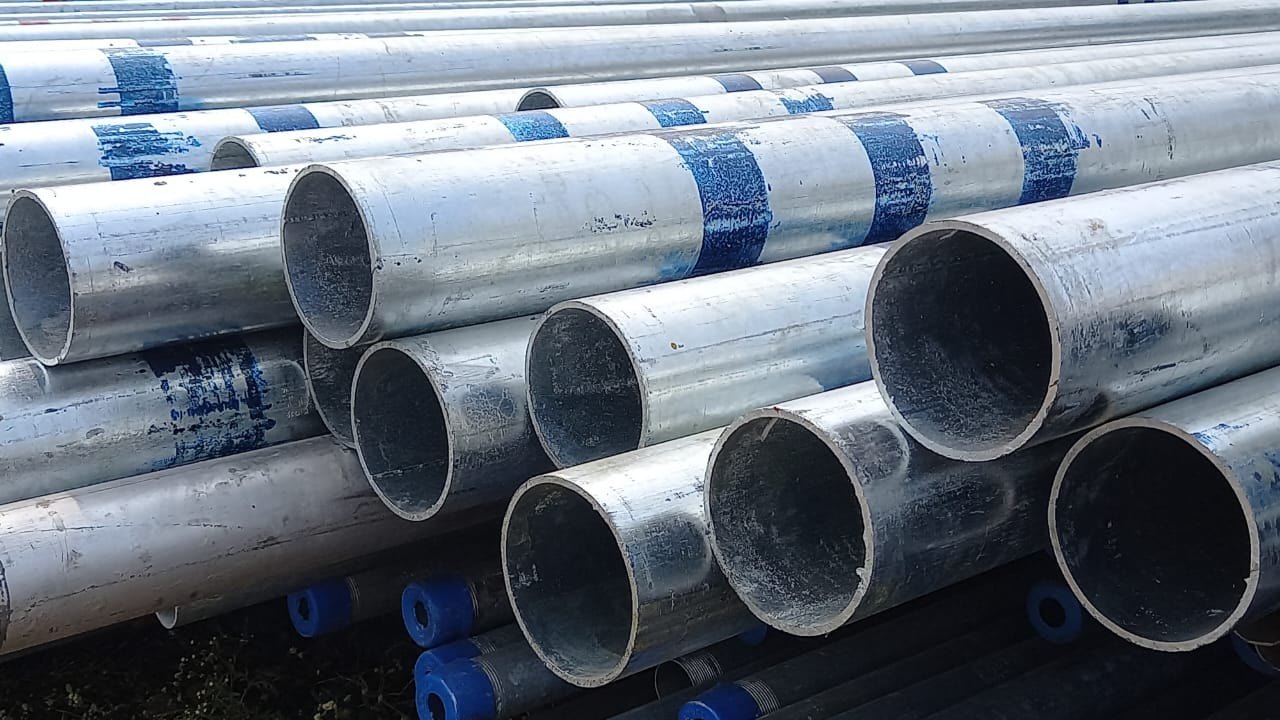Galvanized iron pipes and mild steel pipes are the most preferred options when it comes to construction and industrial projects. These pipes are of different types and are used as per the requirement of the project which has to be carried out. There are many GI And MS Pipe Difference-Size And Standard Tuspipe offers a breakdown of where these pipes perform best and how they should be utilized.
What Are GI Pipes?
GI pipes, or galvanized iron pipes, are iron or steel pipes which are coated with zinc. This zinc layer shields the pipe against rust or corrosion from moisture or humidity. The outer layer of the GI pipes makes them strong and suitable for use in hostile environments. As a result of their corrosion resistance, GI pipes are widely used in water or weather-exposed conditions. Some of the key applications include plumbing, irrigation, and structures that are to be constructed outside buildings. Due to their long service life and low maintenance, they are still popular in many applications to this date.
What Are MS Pipes?
MS pipes are mild steel pipes composed of low-carbon content steel. It is pretty strong, flexible, easy to work with, and pretty strong. Therefore, a large number of people require MS pipes in structural buildings and industrial settings. Whereas, GI pipes are composed of protective zinc content, so MS pipes could get rusted due to moisture if not coated in some protective paints or compounds. MS pipes are highly resistant and versatile. They can be used for applications involving custom fabrication and handling of high-pressure conditions. Being able to be welded and machined increases its versatility, making it usable for any industry.
Applications of GI Pipes
GI pipes are most commonly used in plumbing systems. Their rust-resistant properties make them ideal for carrying water in residential and industrial buildings. It finds applications in irrigation lines that deliver water in a smooth flow for any fields or gardens. Construction activities involve GI pipes with structures such as handrails, fences, and scaffolding outdoors. They remain strong and unaffected by the elements of rain, wind, and sunlight. This makes them a reliable choice for projects that require durability under extreme conditions. In addition to water-related uses, GI pipes are used for air and gas transportation in industrial settings. Their corrosion resistance ensures that the transported substances remain uncontaminated, maintaining safety and efficiency.
Applications of MS Pipes
MS pipes are a popular choice in construction projects that require strong, load-bearing structures. They are applied in the construction of columns, beams, and frameworks of buildings and bridges. Due to their high-pressure tolerance, they can be used in areas where the structure of the material is of paramount importance. For example, in the oil and gas industry, the MS pipes are used for conveying fluids under pressure. They can withstand tough conditions including offshore drilling or any industrial equipment. They are also used in the automotive industry because these pipes make vehicles stronger and lighter. MS pipes are often preferred for custom projects. Their machinability and weldability make it easy to modify them for specific needs. This includes making pipelines, equipment frames, or even artistic metalwork.
Comparing the Two Pipes
The decision to use either GI or MS pipes depends on the type of project that is being undertaken. GI pipes are most preferred where corrosion is a factor, for example, in water supply or structures exposed to weather elements. They are dependable in wet conditions since their zinc coating offers them protection from rust for a long. On the other hand, MS pipes are used in projects where strength, flexibility, and customization are needed. They can be bent, welded, and machined to suit specific designs and therefore are suitable for industrial and structural applications. However, they require other treatments if they are exposed to moisture to avoid rusting. Cost is another factor to consider. GI pipes are generally more expensive due to the galvanization process, but their long lifespan can offset the initial cost. MS pipes are more affordable upfront but may require ongoing maintenance to prevent rust and ensure durability.
Conclusion
Both GI and MS pipes have their advantages and these pipes are used where they are most appropriate. This is the main reason why GI pipes are suitable for corrosion requirements such as plumbing and irrigation systems and structures. MS pipes are ideal for structural as well as industrial use where the pipes need to be of customized strength and flexibility. It is easier to select the right material for a project when the properties and uses of these pipes are well understood. Both have their uses in building efficient systems; the rust-preventing abilities of GI pipes and the versatility of MS pipes. In this way, projects can reach long-term success and performance by choosing the right pipe.
